Ceratiomyxa porioides (Ceratiomyxa porioides)
:
- Keratomixa porievaya
- Ceratium porioides
- Isaria porioides
- Famintzinia porioides
- Ceratiomyxa mucida var. and porioids
- Ceratiomyxa fruticulosa var. porioides
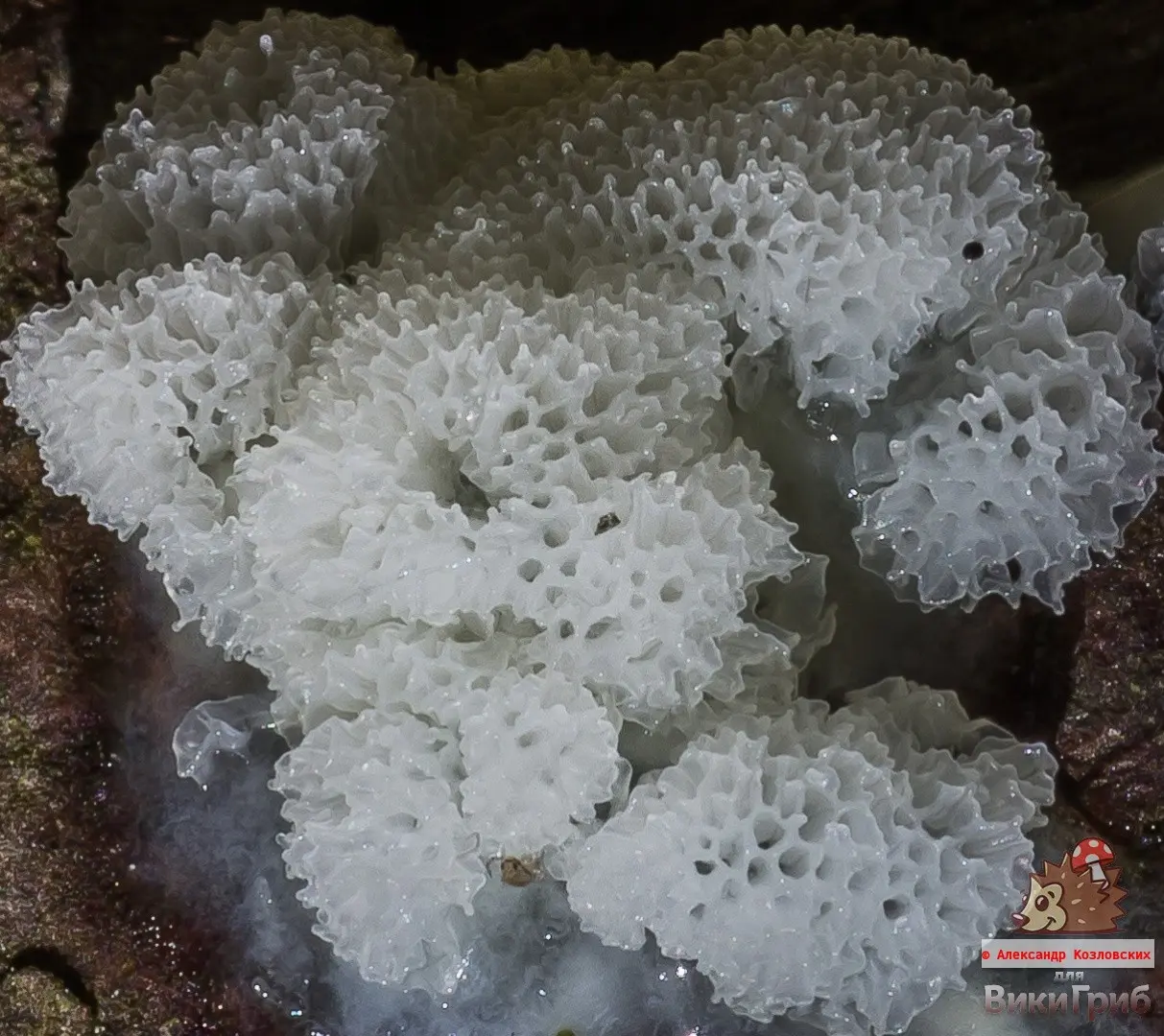
Like many myxomycetes, Ceratiomyxa poriaceae at the stage of maturation forms a slimy mass that can cover a fairly large surface of the substrate. Separate fruiting bodies growing apart may look like balls. Growing close to each other, they merge (but do not grow together) into a common mass. All this mass is porous, all sporocarps are pores, as if a miniature sponge with an intricate radiant-toothed border of pores has grown on a tree. Of course, to see this beauty, you need to zoom in.
Sporocarps sessile, pedunculate, distinctly angular. Serrated with age. Mucous, moist. Most often white, whitish, pale yellow to yellow, sometimes pink or pale yellow to greenish yellow. Plasmodium is yellowish or yellow in color.
The pores are wide, angular, geometric in cross section.
Ceratiomyxa poria in different stages of development:
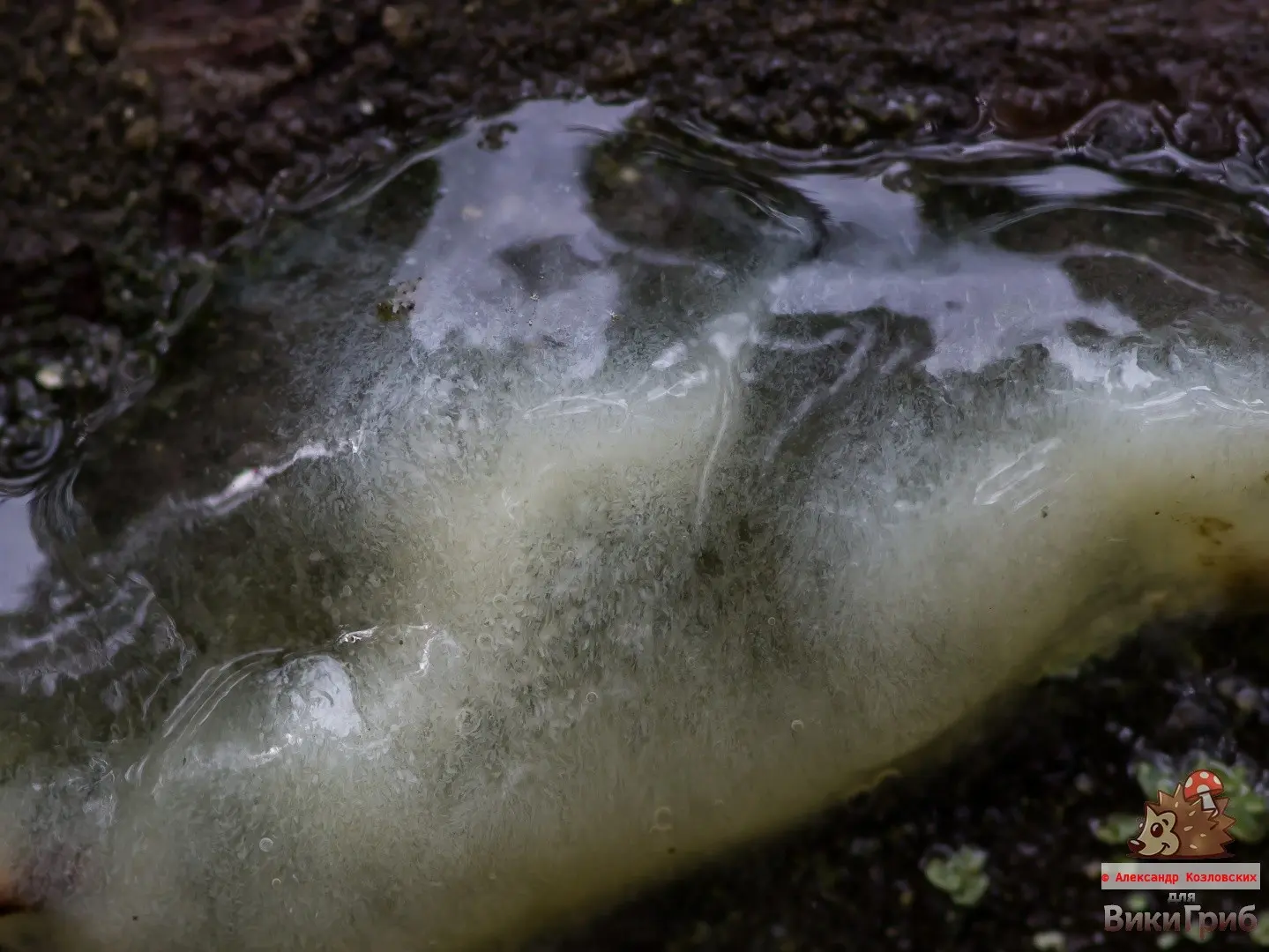
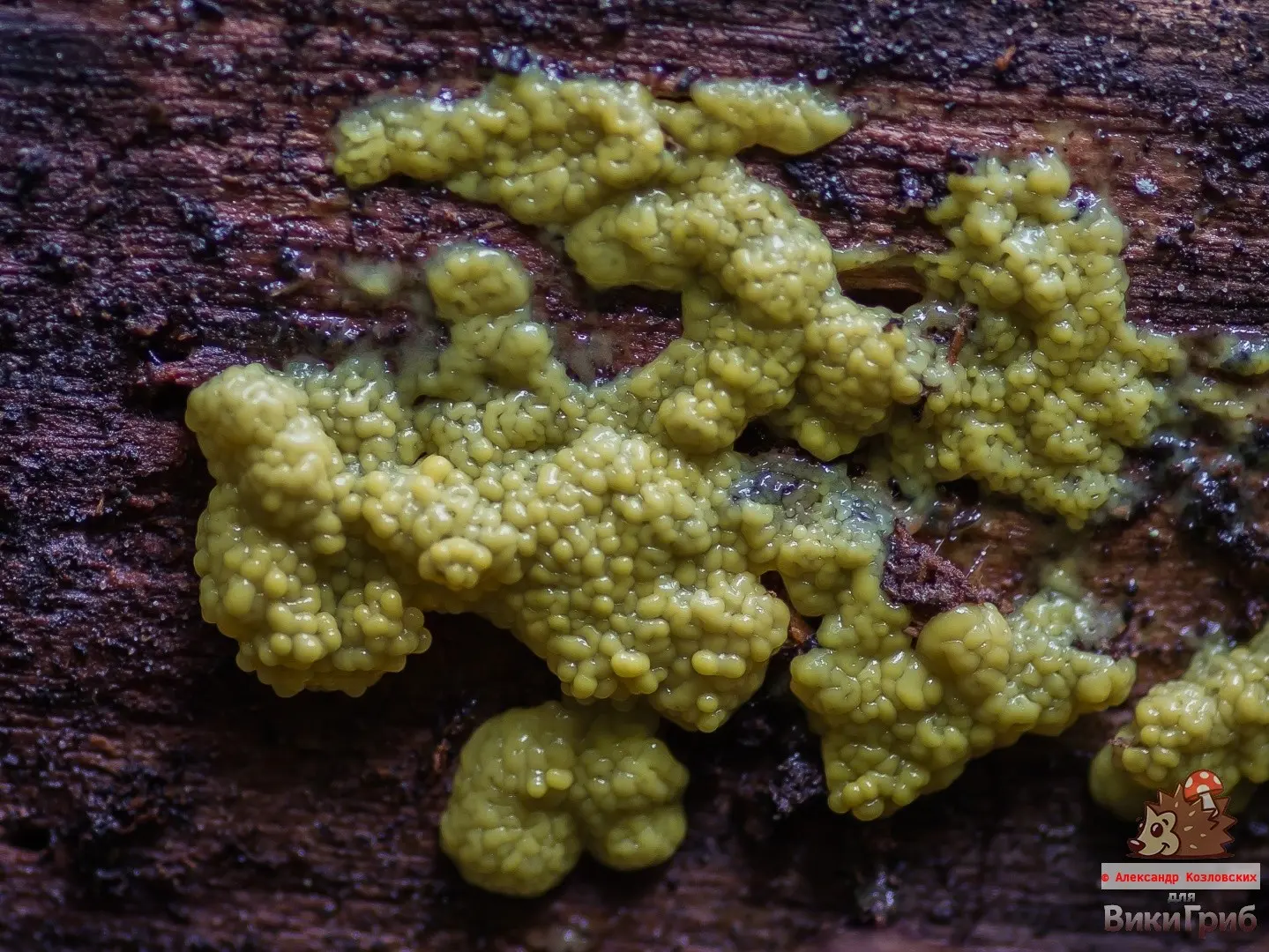
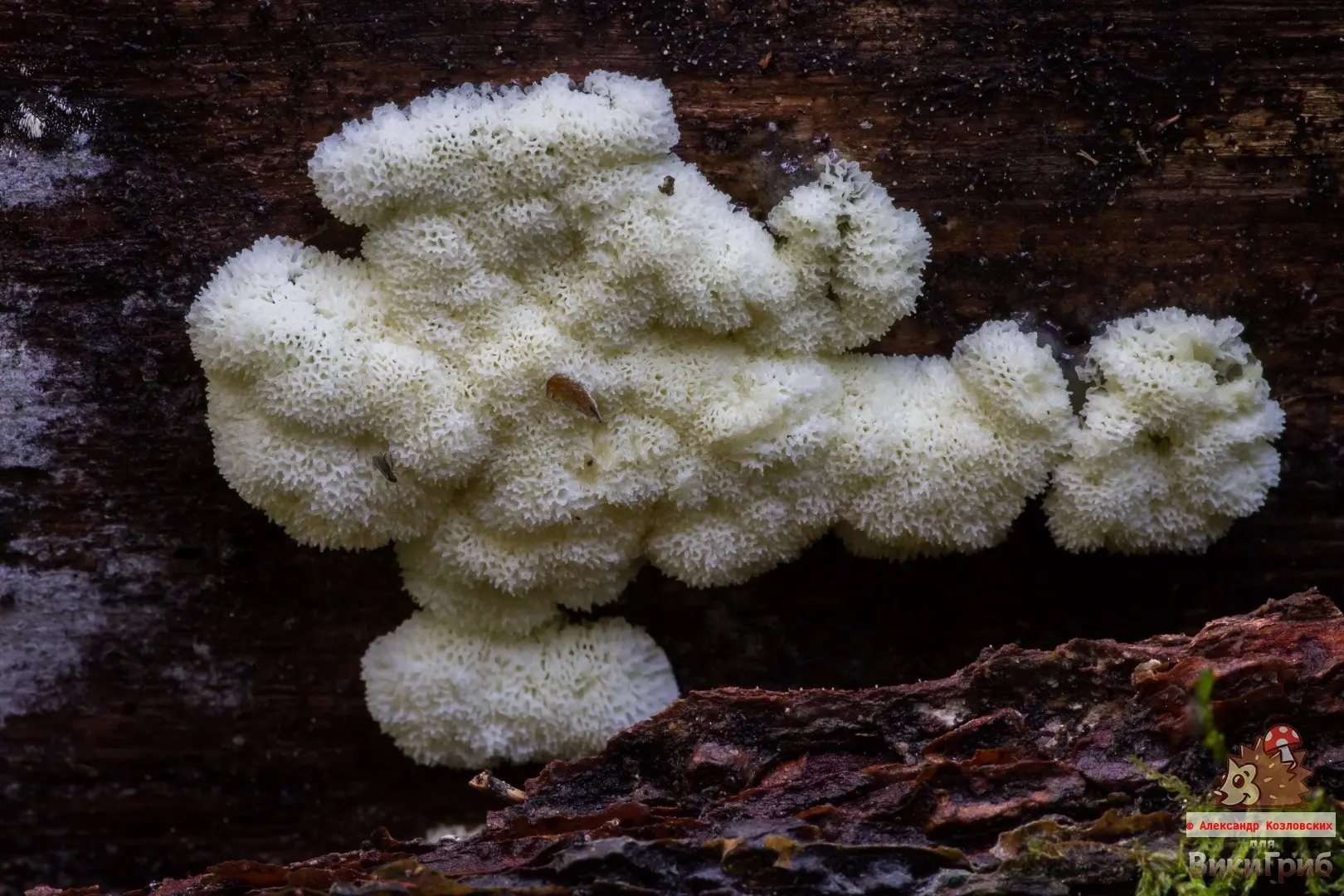
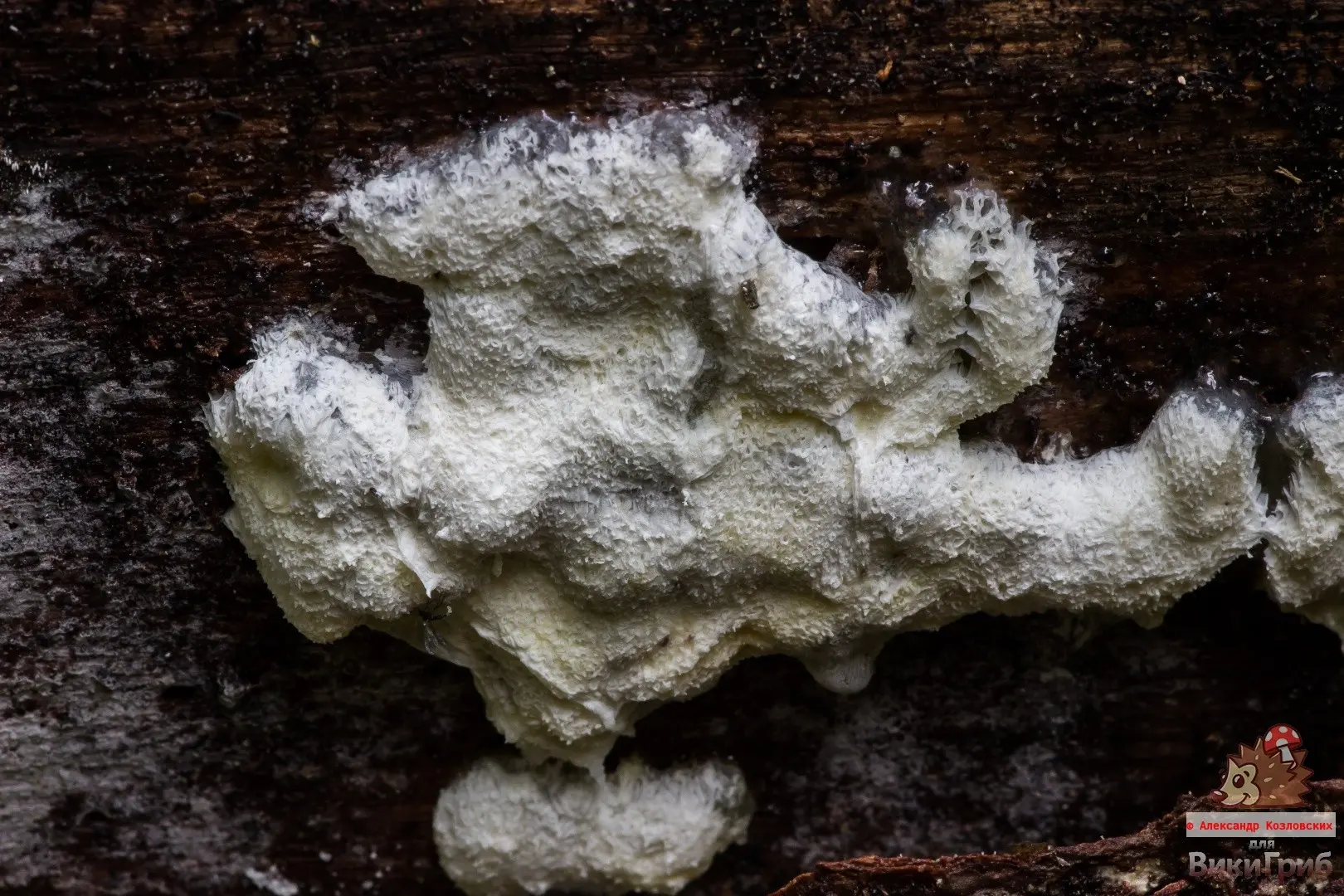
spore powder: milky white.
Споры: free, spherical or ellipsoidal, smooth, hyaline, with a diameter of 5-7 x 9-10 microns or 6-7 microns.
On very rotten wood, on bark, fallen leaves and other plant debris, in forests of various types.
Ceratiomyxa porous – cosmopolitan, grows in different zones, in the warm season, from spring to autumn.
Unknown. There are no data on toxicity.
Other Ceratiomixes. Other slime molds.
Photo: Vitaliy Humenyuk, Alexander Kozlovskikh.









